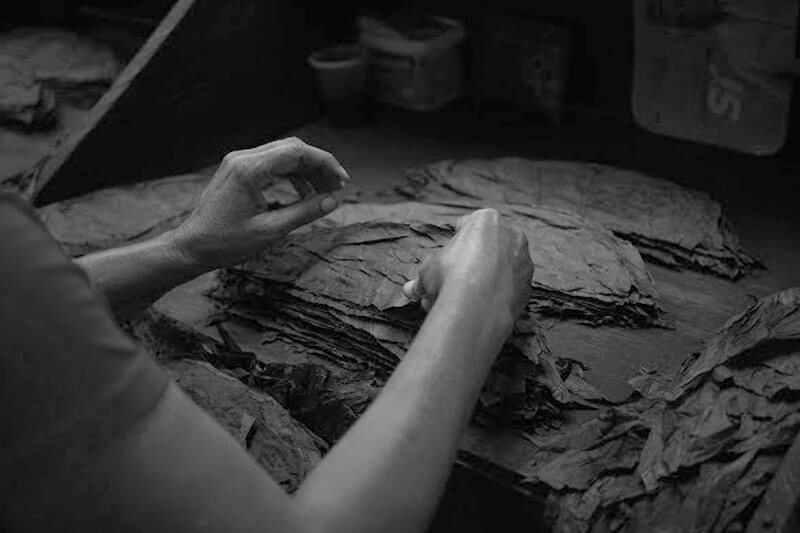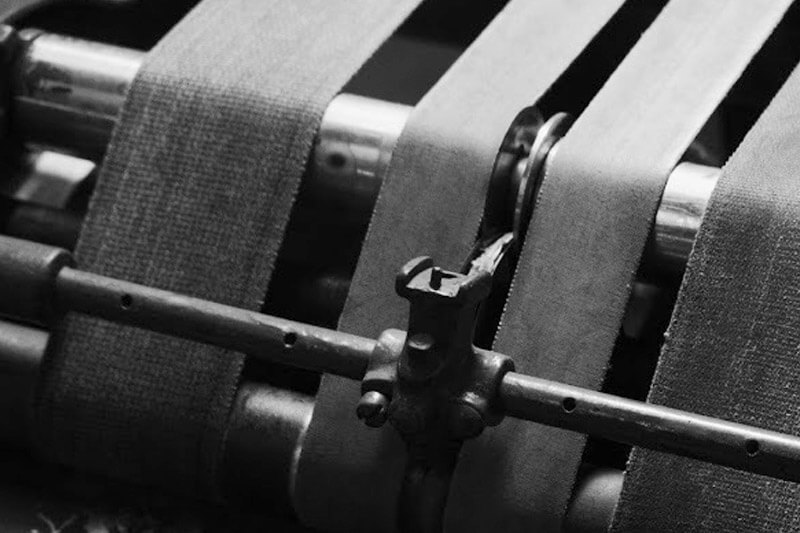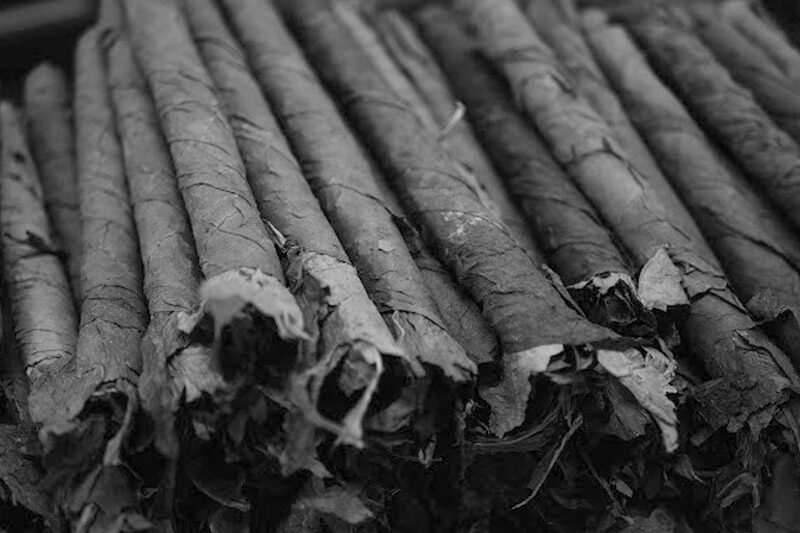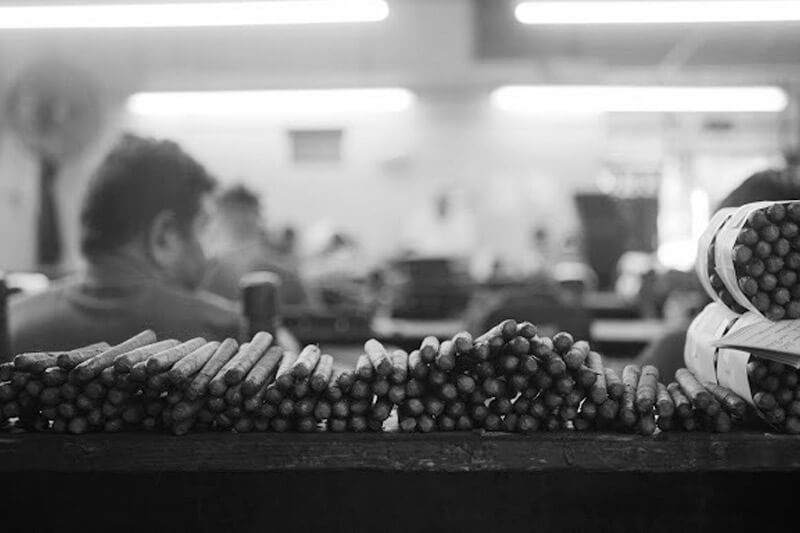1. Cropping and Receiving:
After the tobacco plant is ready, it is cropped and the leaves are collected, then hanged in barns in what is called a “sarta”, this is how the tobacco is received by most factories.
At Tabacalera Victor Sinclair the making of each cigar can be compared with a work of art.

After the tobacco plant is ready, it is cropped and the leaves are collected, then hanged in barns in what is called a “sarta”, this is how the tobacco is received by most factories.
The second part of the process, first we have to make sure the best wrappers, fillers, and binders are obtained. They are sorted and processed by Color, Strength, Texture, Resiliency and Size
Many of these tobaccos can undergo three to four years of preparation before becoming part of a cigar.




After the tobacco is processed, a “blend” is prepared for each cigar roller. A blend is a specific combination of leaves that is used to make a certain brand of cigars. Each blend has a unique flavor that is produced by the types of tobacco leaves used. All the rollers must use the same blend to assure that all the cigars in a brand will taste the same.
With the blend ready, the tobacco is formed into a rough cylinder called a “bunch.” Great care is taken to make sure that the leaves are laid in the bunch uniformly and straight. This ensures that the finished cigar will not have hard or soft spots, which inhibit the cigar from drawing freely or cause it to, burn fast and hot. The most common method used today is called “Spanish Book Filler.” If you take an extremely sharp razor and cut a cigar deeply along its entire length, you would see that the layers of tobacco exposed look like the pages of a book. Hence, the term “Book Filler.”
Binding
After the bunch is created it is tightly wrapped in a coarse layer of tobacco called a “binder.” The binder gives the cigar its structure, shape, and ability to maintain its moisture content. The bound bunch is then placed into a hardwood mold where it gets its particular shape and is open at each end of the cigar.
Molding
Now, the mold contains approximately ten unfinished cigars and is put into a screw-type press along with other molds. Here the cigars will further “mold” into the desired shape. The mold is two pieces; it has a top and bottom. Since it is smaller in diameter than the unfinished cigar to create a compression effect, a crease is noticeable where the upper and lower halves of the mold meet. Periodically, the press is released, the molds are opened, and the cigars are rotated. This time-consuming process is performed to avoid a crease showing through the wrapper on the finished cigar.
After the cigars have been pressed and turned, they are ready for the skilled hands of the rollers. These craftsmen take the fine, silky, elastic wrapper tobacco and stretch it around the molded cigar body. This is the stretching and smoothing process that gives cigars their appealing looks. When a true craftsman applies the wrapper, a small rectangular piece of tobacco is left attached at the head of the cigar. This piece is called a flag. “Flagging” is the process of molding the rectangular piece of wrapper into the head of a fine cigar.



The finished cigars are inspected in numerous ways. The cigars are collected from the rollers in bundles of fifty and are labeled with the following information:
The bundles of fifty are weighed. Every manufacturer knows how much a bundle of a particular size should weigh. If the total weight of a particular bundle of fifty does not fit within a certain allowance, the foreman will know that the roller is making cigars too loose or too tight. Both mistakes are critical. A cigar wrapped too tight is difficult to draw smoke through. A cigar wrapped too loose is hot burning and has soft spots.
The bundles of fifty that pass the weight criteria are opened and each cigar is felt by hand, from top to bottom, to ensure that the filler has been laid in properly. Cigars failing this critical evaluation are separated and sold as “segundos” or seconds. Cigars with damaged or unsightly wrappers are also separated and reclassified as seconds. All the remaining cigars are put back into bundles of fifty and moved to the “seasoning” or “marriage” rooms.
In the marriage rooms, the cigars are stored in either cedar bins, cedar drawers, or cedar shelves. The temperature and humidity conditions are kept at an ideal level for the cigars to be stored for three weeks to a year. The longer the cigars remain in the seasoning room, the better they will be. Seasoning and marrying accomplish two critical points in the manufacture of really first-rate cigars. The seasoning or aging process allows the cigars to become firmer because the wrappers lose the excess moisture they had from the wrapping process. As the wrapper dries, it shrinks, compresses, and solidifies the cigar, making the cigar a denser, cooler, and slower-burning finished product. In the seasoning room, the flavors of the cigars blend together, or “marry” with each other and absorb the surrounding flavors of the cigars and the cedar in the room.

